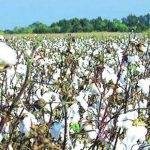
SIMA refutes CAI’s cotton crop estimate of 311 lakh bales for the season 2022-23
Coimbatore
19th August 2023
The predominantly cotton based Indian textile industry has been continuously facing challenges owing to high volatility in cotton prices and 11% import duty on cotton despite having comfortable home-grown cotton availability. The overall cotton textile export including the readymade garments has dropped by 23% during 2022-23 and 18% during the period April -June 2023 when compared to the corresponding period previous year. The cotton yarn export has slid by 50% during 2022-23 compared to year ago, resulting in stoppage of production and job losses to the tune of 30% across the value chain. The Hon’ble Union Minister of Textiles, Shri. Piyush Goyal, constituted a Textile Advisory Group and is taking various corrective measures to stabilize the cotton price and enhance the global competitiveness.
The unique export benefits like RoTDEP that refunds all the blocked and embedded duties, revamping the terms & conditions of cotton contract in MCX futures trading and thereby curbing the speculation and also the joint initiative of Ministry of Agriculture and Ministry of Textiles to implement a Master Plan for enhancing the cotton production and productivity are some of the major initiatives taken by the Hon’ble Minister of Textiles. However, the 11% import duty on cotton facilitates the domestic cotton trade to adopt the import parity pricing and often create panic in the cotton market by underestimating the cotton stock and crop size. The Committee on Cotton Production and Consumption (COCPC) functioning under the Chairmanship of the Textile Commissioner which consists of all stakeholders of the cotton value chain, has been estimating the crop size, imports, exports, consumption, stock, etc. The COCPC estimate has been influencing the cotton price trend and in-turn the performance of the cotton textile value chain.
In a Press Release issued here today, Mr. Ravi Sam, Chairman, The Southern India Mills’ Association (SIMA), has appealed to the Cotton Association of India (CAI) to avoid deviating from the estimate made by COCPC being one of the active members of COCPC to prevent any negative impact on the cotton market. He has refuted the recent CAI estimate of cotton crop, arrival and opening stock for the cotton season 2022-23 that have appeared in the print media. He has stated that the cotton price which was ruling at Rs 55,500 per candy during July 2023 has now increased to Rs. 61,200 per candy, an increase of Rs 5,700 per candy which is higher by 11% of international cotton price. The hosiery cotton yarn price dropped by Rs.25/- per kg (40s combed) during the last month due to sluggish demand and several hundreds of spinning mills suspended yarn production demanding certain relief measures to mitigate the challenges and avoid becoming NPAs. Under this scenario, though the cotton price was increased by Rs.5,700/- per candy, the yarn price increased only by Rs.10/- per kg during August 2023 thus making all the spinning mills to continue to incur cash losses.
Mr. Ravi Sam has said that the Indian cotton price that was higher by 15% to 20%, came down to 3% during April to July 2023 that enabled the exports to revive during April to June. Mr. Ravi Sam has said that the export of cotton textiles has increased to US$ 1,623 million from US$ 1,553 million during Q1 of FY23-24 (April – June). Again, during August 2023, the Indian cotton is expensive by 12%. The steep increase in cotton prices, that would reflect in the yarn price, would make the exporters to incur loss in meeting the export commitments already made by them.
SIMA Chief has stated that the underestimate of crop size has impacted the cotton market and increased the cotton price by Rs.3,000/- per candy within few days. Mr. Ravi Sam has stated that when the cotton arrival as per Cotton Corporation of India has exceeded 318 lakh bales for the season 2022-23, the CAI has projected the crop size as 311.18 lakh bales and the arrival as only 296.8 lakh bales. Mr. Ravi Sam opined that CAI might be projecting the estimate of the ginning production as the crop size of the country and therefore, felt that CAI estimate could be ignored by the stakeholders and rely only on the COCPC estimate. SIMA Chairman has stated that COCPC has estimated the opening stock as 39.48 lakh bales (as against the CAI estimate of 24 lakh bales), the crop size as 343.47 lakh bales (as against CAI estimate is 311.18 lakh bales), consumption as 295, export as 30 lakh bales (as against CAI estimate is 16 lakh bales) and closing stock as 51.95 lakh bales ( as against CAI estimate of 23.18 lakh bales). He has appealed to the Ministry of Textiles to advise all the Members of COCPC to avoid projecting their own estimates as a Code of Conduct.
Mr. Ravi Sam has stated that removal of 11% import duty is very much essential to bring stability in cotton prices and also gain global competitiveness on raw material front and achieve a sustained growth in cotton textile exports. He has added that with considerable increase in the global ending stock of 20.495 billion kgs from the level 18.645 billion kgs, the global cotton supply position is also comfortable and therefore, with 10% to 12% higher cotton price, India cannot export significant volume of cotton. With the comfortable supply position, he has advised the mills to be cautious as the cotton for the new season has already started arriving the market in the Northern Region.





